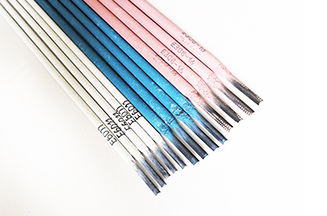electrode for welding mig manufacturer
Understanding MIG Welding Electrodes A Guide for Manufacturers
MIG (Metal Inert Gas) welding, also known as Gas Metal Arc Welding (GMAW), is a widely used welding process that has transformed the fabrication and manufacturing industries. Central to this process is the electrode, which plays a crucial role in the integrity and quality of the weld. In this article, we will explore the significance of MIG welding electrodes, considerations for manufacturers, and the latest advancements in electrode technology.
The Role of MIG Welding Electrodes
MIG welding utilizes a continuous wire feed as the electrode, which serves both as the filler material for the weld and as a source of heat when an electric arc is established between the electrode and the workpiece. The electrode is typically made from various types of steel, each suited to different applications—ranging from mild steel and stainless steel to aluminum and other non-ferrous metals.
The primary purpose of the MIG electrode is to ensure that the weld pool is adequately supplied with filler material while maintaining a stable arc. A well-chosen electrode can lead to stronger, more durable welds, while the wrong choice can result in defects, weakening the joint and potentially leading to failure.
Considerations for Manufacturing MIG Electrodes
Manufacturers involved in producing MIG welding electrodes must consider several factors to ensure the quality and suitability of their products.
1. Material Composition The chemical composition of the electrode wire is crucial. Different alloys can affect the mechanical properties of the weld, its corrosion resistance, and its overall performance in various environmental conditions. Manufacturers need to stay abreast of industry standards and client specifications to produce electrodes that meet the demands of specific applications.
2. Diameter Selection MIG welding electrodes come in various diameters, typically ranging from 0.023 inches to 0.045 inches (0.6 mm to 1.2 mm). The choice of diameter affects the heat input, weld penetration, and travel speed. Manufacturers must offer a range of diameters to accommodate different welding tasks and preferences.
electrode for welding mig manufacturer

3. Coating and Wire Feedability The surface coating on the wire can influence its feedability through the welding machine. A smooth coating can aid in reducing friction and jams during the feed process. Manufacturers should ensure that their products have the right balance of coating to enhance performance without compromising weld quality.
4. Packaging and Storage Proper packaging is essential to protect the electrodes from moisture, contaminants, and damage during transport and storage. Using vacuum-sealed or inert-gas-filled containers can extend the shelf life of the electrodes, maintaining their integrity until they are ready to be used.
Advancements in Electrode Technology
As technology evolves, so does the manufacturing of MIG welding electrodes. Innovations in materials science have led to the development of advanced alloys and coatings that enhance performance. Recent trends include
- Argon-CO2 Mixtures While standard MIG welding often uses pure CO2 or argon, recent studies suggest that mixed gases can improve arc stability and reduce spatter, leading to cleaner welds. - Self-Shielding Electrodes These electrodes do not require a separate shielding gas, making them suitable for outdoor applications where wind can compromise gas coverage. This innovation not only enhances versatility but also reduces setup time and costs.
- Automated Production Techniques Manufacturers increasingly use automated processes for electrode production, resulting in higher precision, lower costs, and increased consistency in quality. Advanced quality control measures, including real-time monitoring systems, ensure that every batch meets stringent industry standards.
Conclusion
In conclusion, MIG welding electrodes are a fundamental element in the welding process, impacting the quality and efficiency of welds. For manufacturers, understanding the intricacies of electrode production, from material selection to technological advancements, is essential to meet the growing demands of the industry. With continuous improvement and innovation, the future of MIG welding electrodes looks promising, paving the way for even more robust applications in various sectors, from automotive to aerospace. As a manufacturer, staying informed and adaptable to these changes will be key to success in the competitive welding market.
-
E7018 Welding Rods: Premium Low Hydrogen ElectrodesNewsAug.04,2025
-
High-Strength Cast Iron Welding Electrode AWS ENi-ClNewsAug.03,2025
-
E6011 Welding Rod | All-Position AC/DC ElectrodesNewsAug.02,2025
-
J422 Welding Rod: Durable Electrodes for Strong WeldsNewsAug.01,2025
-
AWS E7024 Arc Welding Electrodes: High-Efficiency & Easy UseNewsJul.31,2025
-
AWS E7018 Welding Rod: Low Hydrogen ElectrodesNewsJul.31,2025


